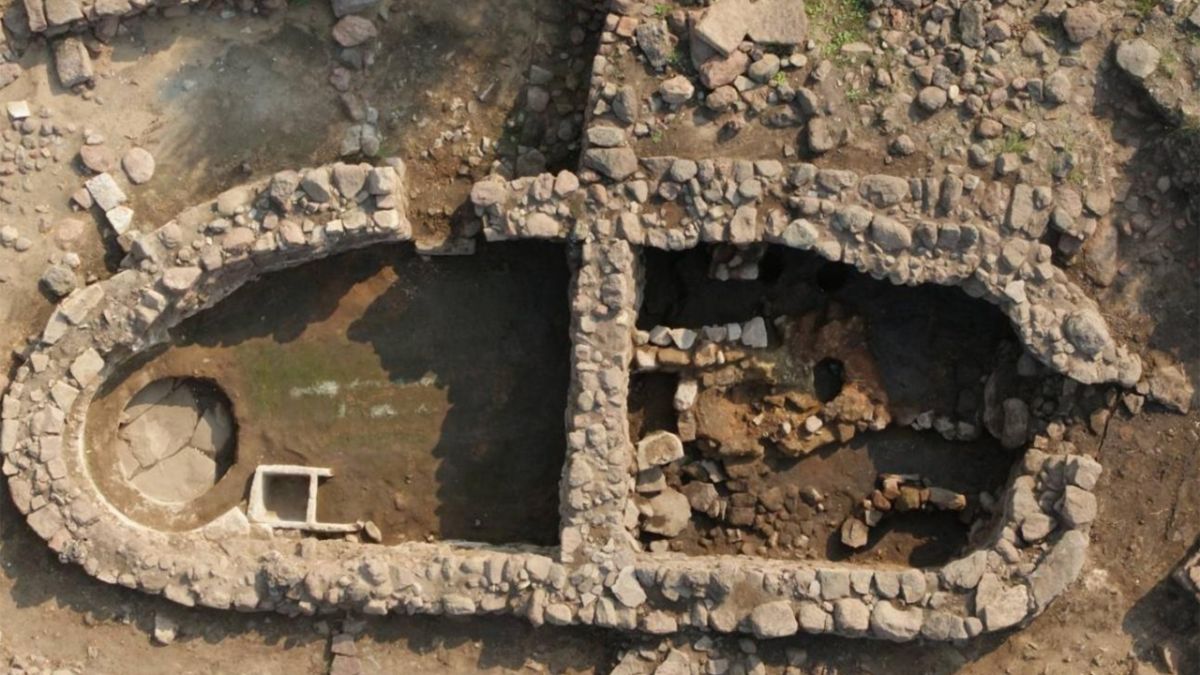
ancient traces
The first dates back to the seventh millennium BC
The first significant traces settlement island date back to the seventh millennium BC with the landing of peoples from the eastern Mediterranean who first settled along the coast and then in dealing with agriculture and pastoralism.
Representative of those companies, the ancient architecture of the Domus de Janas (fairy houses), man-made caves carved into the rock where the dead were placed.
The emblem is the best known of Sardinia nuraghe, building made from civilization nuragiche precisely, who settled on the island from 2500 BC about until a few decades before the Christian era.
Approximately 7,000 nuragheses scattered throughout the region, grand stone structures in the shape of a truncated cone tower as impregnable castles, but probably used as temples for the worship of deities.
Among the most visited nuragheses: Albucciu (Arzachena), Maiori (Tempio), Palmavera (Alghero), Losa and Village of S. Cristina (Abbasanta and Paulilatino), Santu Antine (Torralba), Su Nuraxi (Barùmini).
In the same age are also the typical burial in collective graves called Tombe of the Giganti, so appealed to the large size.
To enrich the homes and to offer to the gods in the vote, the nuragici produced bronzes, small bronze figurines depicting men, animals and more part of everyday life.
Linked to the cult of the water, holy wells, interesting in terms of architecture.
They belong to the age prenuragic the hundred dolmens present throughout Sardinia, megalithic constructions in which the two vertical elements arranged cutting into the ground will support a third horizontal.
About 260 are the menhirs, large monolithic stones stuck in the ground with religious purposes, in the Sardinian language called perdas fittas or longas.
Characteristic of the religious worship of the people of the Phoenicians are the Tophet, or cemeteries on whose land are scattered urns containing ashes and human bones; about 35 specimens are on the island.
Arriving at times more "modern" it is important to suggest a visit to the numerous examples of Pisan Romanesque churches built between 1000 and 1300. In the province of Cagliari are representative S. Maria in Uta and S. Saturnino in Cagliari; in Nuoro, San Nicola, Ottana and S. Pietro in Bosa; in the Oristano, S. Right in the locality, S. Maria in Bonarcado; in Gallura, S. Simplicio in Olbia, S. Gavino in Porto Torres, SS. Trinita Saccargia Codrongianus, S. Antioco Bisarcio Ozieri, St. Pietrodi Sorres in Borutta.
Representative of those companies, the ancient architecture of the Domus de Janas (fairy houses), man-made caves carved into the rock where the dead were placed.
The emblem is the best known of Sardinia nuraghe, building made from civilization nuragiche precisely, who settled on the island from 2500 BC about until a few decades before the Christian era.
Approximately 7,000 nuragheses scattered throughout the region, grand stone structures in the shape of a truncated cone tower as impregnable castles, but probably used as temples for the worship of deities.
Among the most visited nuragheses: Albucciu (Arzachena), Maiori (Tempio), Palmavera (Alghero), Losa and Village of S. Cristina (Abbasanta and Paulilatino), Santu Antine (Torralba), Su Nuraxi (Barùmini).
In the same age are also the typical burial in collective graves called Tombe of the Giganti, so appealed to the large size.
To enrich the homes and to offer to the gods in the vote, the nuragici produced bronzes, small bronze figurines depicting men, animals and more part of everyday life.
Linked to the cult of the water, holy wells, interesting in terms of architecture.
They belong to the age prenuragic the hundred dolmens present throughout Sardinia, megalithic constructions in which the two vertical elements arranged cutting into the ground will support a third horizontal.
About 260 are the menhirs, large monolithic stones stuck in the ground with religious purposes, in the Sardinian language called perdas fittas or longas.
Characteristic of the religious worship of the people of the Phoenicians are the Tophet, or cemeteries on whose land are scattered urns containing ashes and human bones; about 35 specimens are on the island.
Arriving at times more "modern" it is important to suggest a visit to the numerous examples of Pisan Romanesque churches built between 1000 and 1300. In the province of Cagliari are representative S. Maria in Uta and S. Saturnino in Cagliari; in Nuoro, San Nicola, Ottana and S. Pietro in Bosa; in the Oristano, S. Right in the locality, S. Maria in Bonarcado; in Gallura, S. Simplicio in Olbia, S. Gavino in Porto Torres, SS. Trinita Saccargia Codrongianus, S. Antioco Bisarcio Ozieri, St. Pietrodi Sorres in Borutta.
- Topics
- Storia di Sardegna
-
Search
-
Categories
- APP FAITA Sardegna
- HOLIDAY PACKAGES
- CAMPING VILLAGE Sardinia
- Where to eat
- TRANSPORT Sardinia
- BEACHES in Sardinia
- Tours in Sardinia
- KITCHEN traditional Sardinian
- WINES Sardinia
- SPIRITS of Sardinia
- EVENTS in Sardinia
- CORTES Apertas in Sardinia
- SPORT in Sardinia
- MAP Sardinia
- PHOTOS Sardinia
- VIDEO Sardinia
- Useful Numbers Sardinia
- DOGGIE BEACH in Sardinia
- Contact information
- archivio
-
Topics
- Camping e Village Sardinia
- Tourism in Sardinia
- resorts in Sardinia
- Sardinian beaches routes
- Specialties at the table
- South Coast Cagliari
- Costa Rei itinerari
- Ogliastra itinerari
- Nuoro e provincia itinerari
- Gallura itinerari
- Sassari e provincia itinerari
- Oristano e provincia itinerari
- Autunno in Barbagia 2013
- Aerei per la Sardegna
- Traghetti per la Sardegna
- Storia di Sardegna
- Feste e sagre della Sardegna
- Camping Village e Spiagge dog friendly
- Spiagge accessibili con l'amico cane









